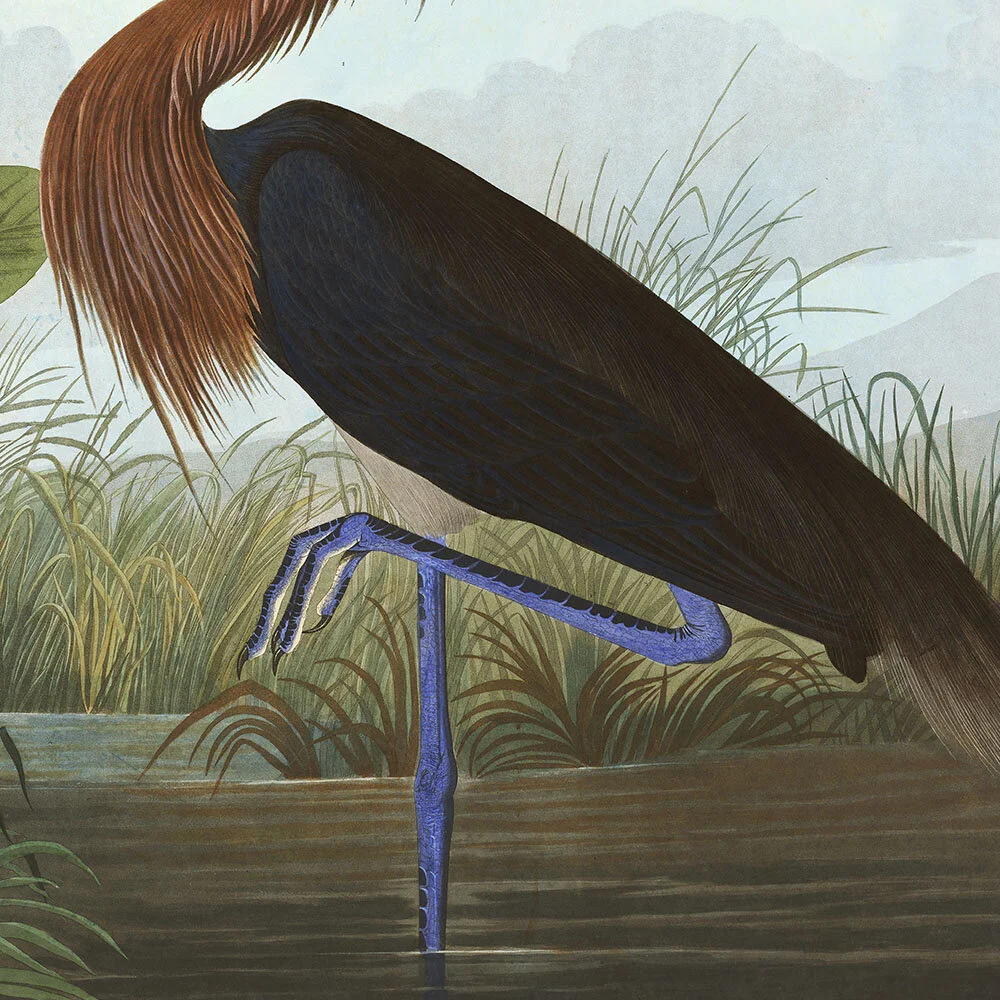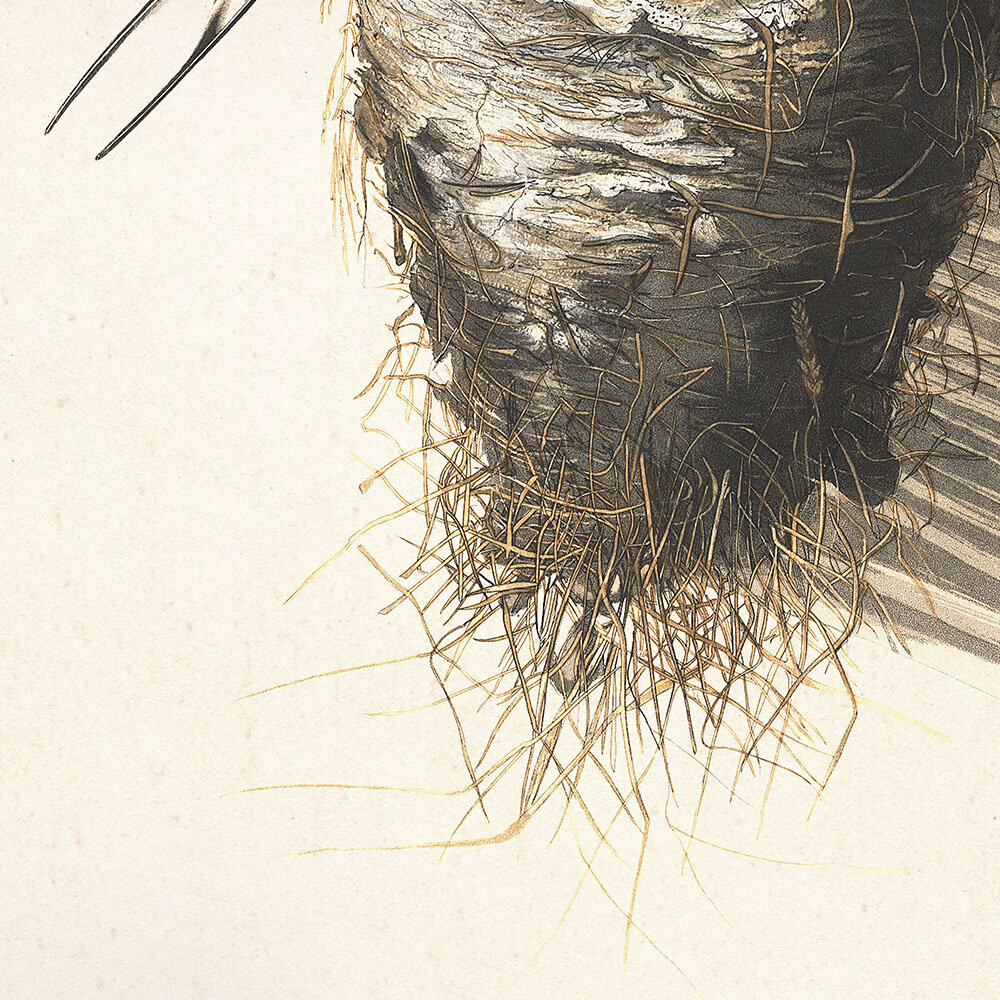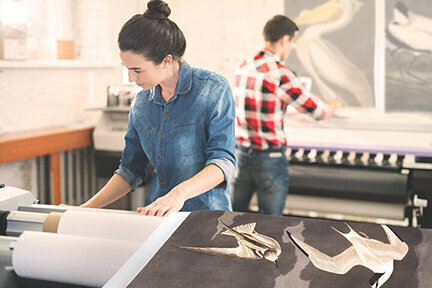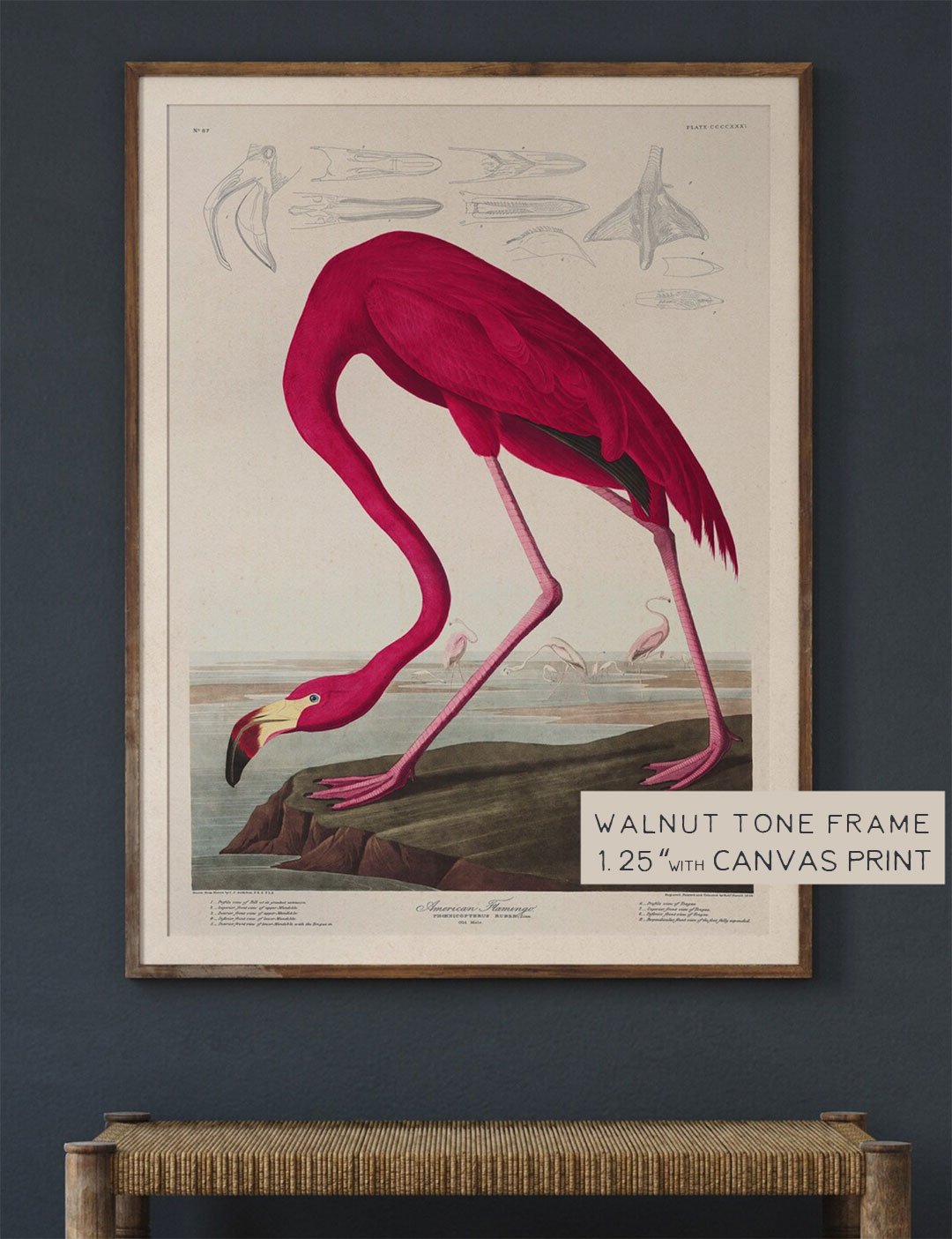Noddy Tern | Audubon Art Plate 275
Noddy Tern | Audubon Art Plate 275
Product Information
This beautiful Audubon art is expertly reproduced and delicately recreated on Museum-Grade Giclée Canvas. These stunning works make excellent wall art and wall decor for your home or office. Your elegant taste has brought you here and delivering master-quality artwork is our highest priority.
Options
The beautiful Giclée Museum-Grade Canvas comes as either a Ready-to-Hang Beautiful Walnut Tone Framed Giclee Canvas, or without stretchers as a Rolled Canvas art ready for framing. Whatever your choice, the artwork is shipped FREE in an Art-Safe Shipping Package, so that you can count on your master-quality artwork arriving quickly and safely.
Noddy Tern | Audubon Art Plate 275
Product Information
This beautiful Audubon art is expertly reproduced and delicately recreated on Museum-Grade Giclée Canvas. These stunning works make excellent wall art and wall decor for your home or office. Your elegant taste has brought you here and delivering master-quality artwork is our highest priority.
Options
The beautiful Giclée Museum-Grade Canvas comes as either a Ready-to-Hang Beautiful Walnut Tone Framed Giclee Canvas, or without stretchers as a Rolled Canvas art ready for framing. Whatever your choice, the artwork is shipped FREE in an Art-Safe Shipping Package, so that you can count on your master-quality artwork arriving quickly and safely.
Noddy Tern | Audubon Art Plate 275
Product Information
This beautiful Audubon art is expertly reproduced and delicately recreated on Museum-Grade Giclée Canvas. These stunning works make excellent wall art and wall decor for your home or office. Your elegant taste has brought you here and delivering master-quality artwork is our highest priority.
Options
The beautiful Giclée Museum-Grade Canvas comes as either a Ready-to-Hang Beautiful Walnut Tone Framed Giclee Canvas, or without stretchers as a Rolled Canvas art ready for framing. Whatever your choice, the artwork is shipped FREE in an Art-Safe Shipping Package, so that you can count on your master-quality artwork arriving quickly and safely.
Each Audubon art print is hand created to deliver a beautiful work of art to your home. You will love the quality of each print. See some examples of how people use their Audubon art prints, posters, wall art and wall decor by clicking the “DECOR IDEAS” link at the bottom of the page.
John James Audubon’s Journal Entry:
About the beginning of May, the Noddies collect from all parts of the Gulf of Mexico, and the coasts of Florida, for the purpose of returning to their breeding places, on one of the Tortugas called Noddy Key. They nearly equal in number the Sooty Terns, which also breed on an island a few miles distant. The Noddies form regular nests of twigs and dry grass, which they place on the bushes or low trees, but never on the ground. On visiting their island on the 11th of May, 1832, I was surprised to see that many of them were repairing and augmenting nests that had remained through the winter, while others were employed in constructing new ones, and some were already sitting on their eggs. In a great many instances, the repaired nests formed masses nearly two feet in height, and yet all of them had only a slight hollow for the eggs, broken shells of which were found among the entire ones, as if they had been purposely placed there. The birds did not discontinue their labours, although there were nine or ten of us walking among the bushes, and when we had gone a few yards into the thicket, thousands of them flew quite low over us, some at times coming so close as to enable us to catch a few of them with the hand. On one side might be seen a Noddy carrying a stick in its bill, or a bird picking up something from the ground to add to its nest; on the other several were seen sitting on their eggs unconscious of danger, while their mates brought them food. The greater part rose on wing as we advanced, but re-alighted as soon as we had passed. The bushes were rarely taller than ourselves, so that we could easily see the eggs in the nests. This was quite a new sight to me, and not less pleasing than unexpected.
The Noddy, like most other species of Terns, lays three eggs, which average two inches in length, by an inch and three-eighths in breadth, and are of a reddish-yellow colour, spotted and patched with dull red and faint purple. They afford excellent eating, and our sailors seldom failed to collect bucketsful of them daily during our stay at the Tortugas. The wreckers assured me that the young birds remain along with the old through the winter, in which respect the Noddy, if this account be correct, differs from other species, the young of which keep by themselves until spring.
At the approach of a boat, the Noddies never flew off their island, in the manner of the Sooty Terns. They appeared to go farther out to sea than those birds, in search of their food, which consists of fishes mostly caught amid the floating sea-weeds, these Terns seizing them, not by plunging perpendicularly downwards, as other species do, but by skimming close over the surface in the manner of Gulls, and also by alighting and swimming round the edges of the weeds. This I had abundant opportunities of seeing while on the Gulf of Mexico.
The flight of this bird greatly resembles that of the Night Hawk when passing over meadows or rivers. When about to alight on the water, the Noddy keeps its wings extended upwards, and touches it first with its feet. It swims with considerable buoyancy and grace, and at times immerses its head to seize on a fish. It does not see well by night, and it is perhaps for this reason that it frequently alights on the spars of vessels, where it sleeps so sound that the seamen often catch them. When seized in the hand, it utters a rough cry, not unlike that of a young American Crow taken from the nest. On such occasions, it does not disgorge its food, like the Cayenne Tern and other species, although it bites severely, with quickly repeated movements of the bill, which, on missing the object aimed at, snaps like that of our larger Fly-catchers. Some which I kept several days, refused all kinds of food, became dull and languid, and at length died.
STERNA STOLIDA, Bonap. Syn., p. 356.
NODDY, Nutt. Man., vol. ii. p. 285.
NODDY TERN, Sterna stolida, Aud. Orn. Biog., vol. iii. p. 516; vol. v.p. 642.
Male, 16 4/12, 32.
Abundant on the Gulf of Mexico during the whole year. Breeds in vast multitudes on the Tortugas Keys.
Adult Male.
Bill longer than the head, strong, slender, nearly straight, compressed, very acute. Upper mandible with the dorsal line slightly arched, the ridge broad and convex at the base, narrowed towards the end, the sides convex, the edges sharp and inflected, the tip acute. Nasal groove extended to beyond half the length of the bill, slightly deflected towards the edge; nostrils sub-medial, linear, direct, pervious. Lower mandible with the angle very narrow, acute, extending to the middle, the dorsal line straight, or very slightly concave, the sides convex, the sharp edges inflected, the tip extremely acute.
Head of moderate size, oblong, compressed; neck of moderate length; body slender; feet very short, rather stout. Tibia bare for a short space; tarsus very short, roundish, covered anteriorly with small scutella, laterally and behind with reticulated scales; toes slender, the first very small, the third longest, the fourth nearly as long, the second much shorter, all scutellate above, the anterior united by reticulated webs, having an incurved margin; claws curved, compressed, acute, that of hind toe smallest, of middle toe by much the largest, and having the inner edge thin and dilated.
Plumage soft, close, blended, very short on the head; the feathers in general broad and rounded. Wings very long, narrow, and pointed; primary quills tapering but rounded, the first longest, the rest rapidly graduated; secondaries short, broad, rather acute, the inner more tapering. Tail long, cuneate, of twelve tapering rounded feathers.
Bill black. Iris brown. Feet dull brownish-red, the webs dusky, the claws black. The general colour is sooty brown; the primaries and tail-feathers brownish-black; the upper part of the head greyish-white; a black spot anterior to and over the eye.
Length to end of tail 16 4/12, to end of wings 16 1/12, to end of claws 13 11/12; extent of wings 32; wing from flexure 10 10/12; tail 5 3/4; bill along the back 1 3/4, along the edge of lower mandible 2 1/4; tarsus (10 1/2)/12; middle toe 1 1/4, its claw (4 1/2)/12. Weight 4 3/4 oz.
Width of mouth 9 twelfths. Tongue 1 inch 3 twelfths long, very slender, tapering to a horny point, grooved above, emarginate and papillate at the base. OEsophagus 4 inches 4 twelfths long, its width along the neck 8 twelfths, within the thorax dilated as in the last species, its breadth 1 inch 1 twelfth; the proventricular belt 4 twelfths broad. Stomach very small, 10 twelfths long, 8 twelfths in breadth, of the same structure as in the last. Lobes of liver 1 inch 2 twelfths and 11 twelfths; gall-bladder oblong, 6 twelfths in length, 3 twelfths in breadth. Intestine 13 inches long, 2 1/2 twelfths wide at the commencement, 1 1/2 twelfths toward the rectum; coeca 2 1/4 twelfths long, 1/2 twelfth wide, 1 1/2 inches from the extremity; cloaca ovate, 7 twelfths in width. Trachea 3 inches long, from 2 3/4 twelfths to 1 1/2 twelfths in breadth, roundish; the rings 110, very feeble. Bronchi very wide, one with 26, the other with 24 half rings.













































